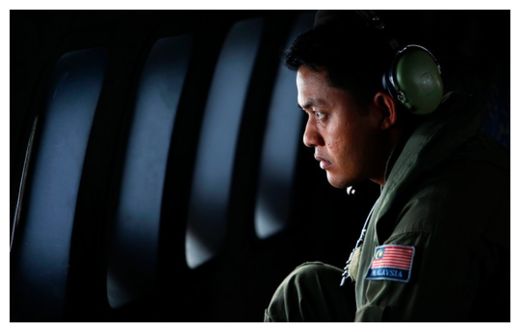
Something significant was missing when senior ministers from Malaysia, Australia and China announced a new effort to find the wreckage of Malaysia Airlines Flight 370 on Thursday. There was no mention of what is fast becoming the most perplexing feature of this multi-layered mystery: why has no floating wreckage turned up?
Make no mistake, the more time that passes without a single piece of floating wreckage being found the stranger it gets.
There is no previous case in the history of modern intercontinental jets where a crash into an ocean has not produced floating wreckage - and within days of the disaster. No matter how violent the impact of an airplane hitting the water there will always be some scattered debris that never sinks.
Last fall the Australian Transport Safety Board, who are directing the sea search for the Boeing 777, said they had assigned a team of experts usually used to predict the path of oil spills to produce a "drift model" - a highly sophisticated calculation combining ocean currents, wind and weather patterns and knowledge of the buoyancy of airplane wreckage - in order to predict when and where wreckage from Flight 370 would appear in places where it would be spotted.
At that time the Australians said that their best guess was that wreckage could take as long as a year to appear and that the most likely place was the long coastline of Western Sumatra on the Indonesian archipelago.
With more than a year gone by nothing has turned up.
Last week The Daily Beast requested a briefing from the Australians on the status of the work being done on the drift model, but received no response.
Of course, such a drift model would have to begin with a confident idea of the initial point of impact in the ocean - its whole accuracy would depend on that. And the new announcement about the search to find the main wreckage beneath the Indian Ocean makes it clear that that kind of certainty does not exist.
"We are moving to widen out the search area and to extend it in every direction" Warren Truss, Australia's deputy prime minister, said in Kuala Lumpur.
This lack of a precise focus for the search area is underlined by the new announcement. The present search area of about 23,000 square miles is 60 percent completed. The ministers said in Kuala Lumpur that if nothing is found when this phase of the search ends next month they will add another 23,000 square miles - although that new search cannot begin until this fall, because winter is coming to the Southern Hemisphere.
Last October the search area was moved 500 miles further south because, according to the Australians, new calculations had been made giving a better fix on where the 777 would have run out of fuel and ended its "zombie flight" toward the South Pole. The area now being suggested for a new search would mean doubling back to the stretch of ocean originally targeted last year.
Nonetheless, the ministers appear confident that Flight 370 does lie somewhere at the bottom of this part of the ocean, and not somewhere else - even if they have now left the impression that they may, after all, have been looking in the wrong place for six months.
Four ships are currently searching an area about 1,000 miles northwest of Perth, Australia. Three of them use advanced sonar scanners and echo sounders while a fourth has an autonomous underwater vehicle (AUV) capable of reaching the most difficult depths of more than 32,000 feet.
So far $86 million has been allocated to the search and the ministers have now pledged another $35 million if another year of searching is needed. As well as declaring that they will continue the search until the remains of the 777 are found the ministers also said that another formidable challenge, recovering and raising wreckage from the ocean floor, is being assessed and resources to carry it out will be acquired.



Reunion With Japanese Fascism
[Link]